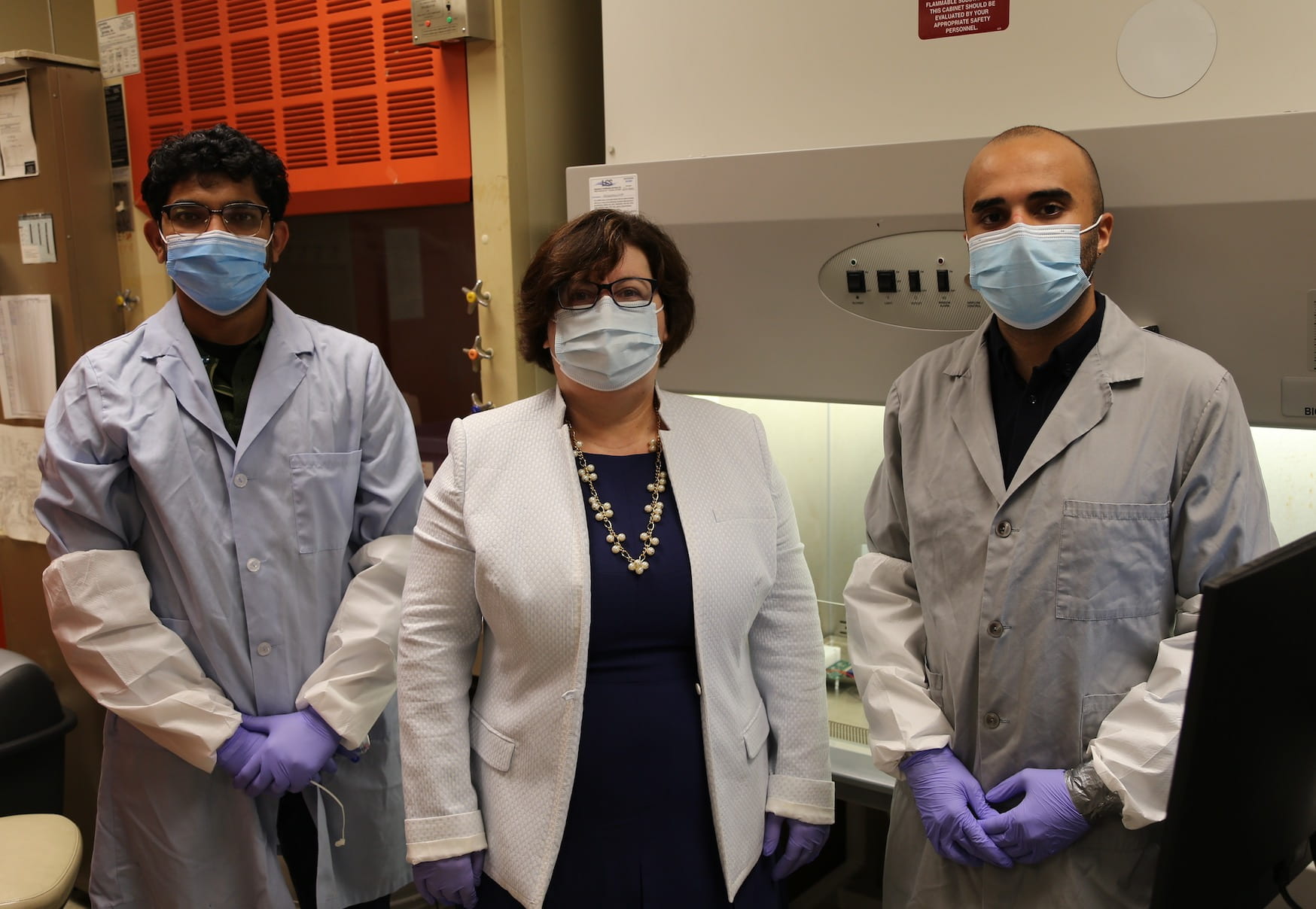
Milind Pawar, Perena Gouma, and Fateh Mikaeili are a part of a team at Ohio State developing a breathalyzer test for COVID-19 that can detect the virus faster and more accurately than nasal swab and spit tests. Credit: Courtesy of Perena Gouma
Puffing may replace brain tickling and tube spitting for COVID-19 screening as Ohio State researchers are developing a breathalyzer form of the test.
A team of three doctors and three medical students are testing the technology in clinical trials using the College of Veterinary Medicine’s biological safety labs. Perena Gouma, the lead inventor of the breathalyzer, said the technology detects COVID-19 more accurately than nasal swab tests.
It also detects COVID-19 much faster — in 15 seconds.
Gouma, the Orton Chair of the Department of Materials Science and Engineering, said the breathalyzer detects active infections through two or three COVID-19 biological markers found in the gases of the breath.
“We are measuring exactly what is the response of the body to the virus,” Gouma said. “The [nasal swab test] is going to show you that there is some virus in the system even when the disease is gone. The good thing with us is that we know exactly when the disease is gone because we monitor the response of the body to the disease.”
The COVID-19 breathalyzer isn’t Gouma’s first; in 2017, she developed a similar breathalyzer test to detect the flu. She said she began developing the COVID-19 breathalyzer when the White House asked her to in February.
“The White House called me and asked me if my flu breathalyzer would work for COVID-19, and I told them that I had no idea because I hadn’t looked into this,” Gouma said. “And then I started looking into this and then we found biomarkers for COVID-19.”
Dr. Matthew Exline, a pulmonary disease and critical care physician who specializes in lung disease at the Wexner Medical Center at Ohio State, said clinical trials started with patients in the intensive care unit at the medical center in June, and outpatient trials started in July. He said the goal is to increase testing capabilities and decrease the number of people who need to take the nasal swab test.
Exline said their goal is to test 46 total ICU patients, 23 who test positive for COVID-19 and 23 who do not. At the time of publication, they have tested 30 total patients. Participants in the outpatient clinical trial requested to get tested through Ohio State.
Gouma said she anticipates FDA approval of the breathalyzer by November. After approval, she said she hopes Ohio State uses the technology in its surveillance testing program, and Exline said he hopes the breathalyzer could improve efforts to monitor the spread of the virus.
“If we could use this device to replace those kinds of temperature check, symptom check stations that we have for institutions like schools, that would be my dream,” Exline said.


